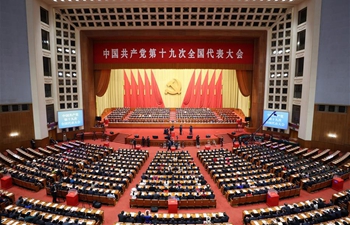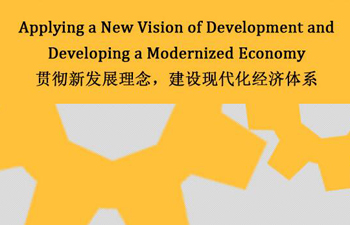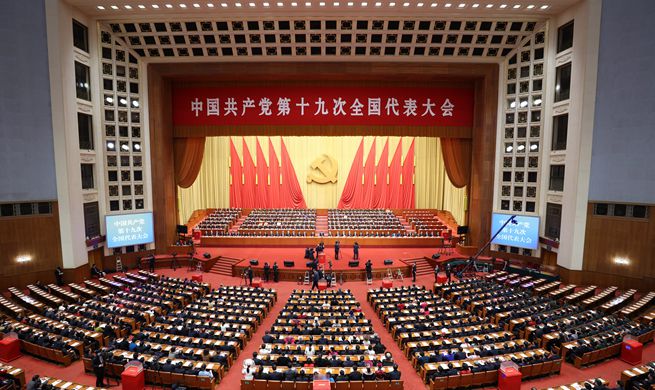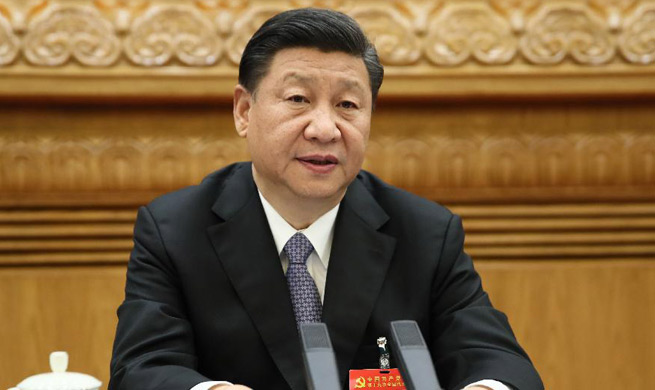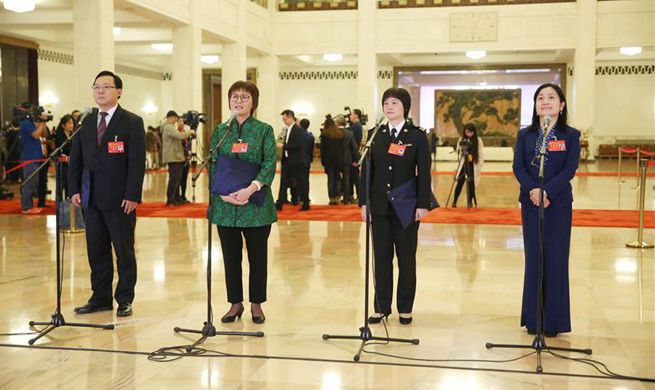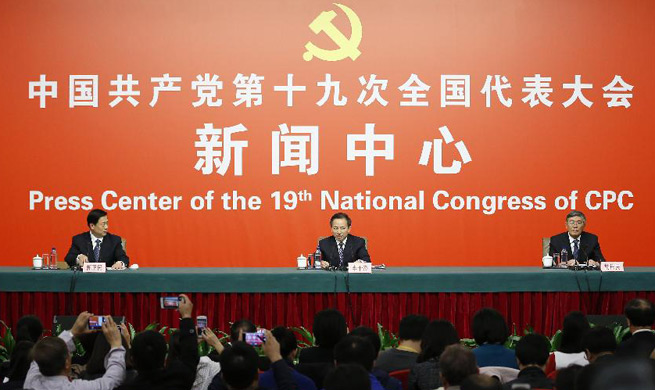SEOUL, Oct. 24 (Xinhua) -- South Korea planned to tighten standard for household loans beginning 2018 by adopting a new debt-to-income (DTI) ratio, which includes the repayment of both principal and interest in the debt segment, the government said Tuesday.
The Ministry of Strategy and Finance, the Ministry of Land, Infrastructure and Transport and the Financial Services Commission jointly announced a set of measures to prevent the rapidly-grown household debts from rising further, saying the new DTI ratio will be introduced next year.
The current DTI ratio allows the only interest payment to be included in calculating the ratio. The new DTI ratio will require those having at least two mortgage loans to include the payment of both principal and interest in the ratio calculation.
Under the Aug. 2 measure to control speculative investment in the real estate market, the DTI ratio ranges from 30 percent to 50 percent in Seoul and its suburban metropolitan areas. Outside the areas, the ratio is set at 60 percent.
The new regulations would make it more difficult for multiple-home owners to purchase more homes with borrowed money.
If a household buys a home with borrowed money, the DTI ratio usually surpasses 30 percent. In districts designated as speculation-ridden areas, the DTI ratio of 30 percent is applied.
Many of multiple-home owners here made a speculative property investment through a so-called "gap investment."
Gap investment refers to an investment in a gap between home price and Jeonse, South Korea's unique home lease contract. As the Jeonse deposit nears home price, multiple-home owners more easily purchase new home with the Jeonse deposit.
Jeonse is a contract between two households where a landlord grants the resident right for two years to a tenant, who in turn lends a certain amount of money, or deposit, to the landlord.
Household debts in South Korea kept a record-breaking trend to reach 1,388 trillion won (1.23 trillion U.S. dollars) as of the end of June.
Both in 2015 and 2016, the debts gained by a double digit, and the double-digit growth was expected to continue in 2017 and exceed 1,450 trillion won by the end of this year.
The rapid expansion in the past years followed the Bank of Korea (BOK)'s benchmark interest rate cut to an all-time low of 1.25 percent in June last year from 3.25 percent in July 2012.
The BOK, however, heralded a rate increase last week, saying conditions to lessen the current level of accommodative monetary policy got mature.
One of the seven-member monetary policy committee claimed a 25-basis-point rate hike. Market watchers predicted higher borrowing costs later this year or early next year.
Furthermore, the government planned to introduce a so-called debt-servicing ratio (DSR) in the second half of 2019 to prevent a balloon effect, under which households rush to borrow other type of loans such as those from lenders demanding an excessively-high interest payment.
The tightening of the loan standard came amid growing concerns that households refrained from spending money due to massive debts. The weak private spending weighed down on the economy's full recovery.
Households' debt-servicing capability also worsened. In terms of income and the value of asset, only 54 percent of the total household debts were owed by households having a sufficient capability to repay debts, according to the government assessment.
About 39 percent of debts were owed by households having an insufficient capability due to lower income or asset, with the remaining 7 percent being at risk for failing to repay debts on shortage of both income and asset.







